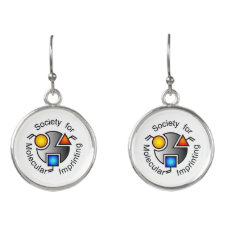
Authors: El-Sharif HF, Yapati H, Kalluru S, Reddy SM
Article Title: Highly selective BSA imprinted polyacrylamide hydrogels facilitated by a metal-coding MIP approach.
Publication date: 2015
Journal: Acta Biomaterialia
Volume: 28
Page numbers: 121-127.
DOI: 10.1016/j.actbio.2015.09.012
Alternative URL: http://www.sciencedirect.com/science/article/pii/S1742706115301057
Abstract: We report the fabrication of metal-coded molecularly imprinted polymers (MIPs) using hydrogel-based protein imprinting techniques. A Co(II) complex was prepared using (E)-2-((2 hydrazide-(4-vinylbenzyl)hydrazono)methyl)phenol; along with iron(III) chloroprotoporphyrin (Hemin), vinylferrocene (VFc), zinc(II) protoporphyrin (ZnPP) and protoporphyrin (PP), these complexes were introduced into the MIPs as co-monomers for metal-coding of non-metalloprotein imprints. Results indicate a 66% enhancement for bovine serum albumin (BSA) protein binding capacities (Q, mg/g) via metal-ion/ligand exchange properties within the metal-coded MIPs. Specifically, Co(II)-complex-based MIPs exhibited 92 ± 1% specific binding with Q values of 5.7 ± 0.45 mg BSA/g polymer and imprinting factors (IF) of 14.8 ± 1.9 (MIP/non-imprinted (NIP) control). The selectivity of our Co(II)-coded BSA MIPs were also tested using bovine haemoglobin (BHb), lysozyme (Lyz), and trypsin (Tryp). By evaluating imprinting factors (K), each of the latter proteins was found to have lower affinities in comparison to cognate BSA template. The hydrogels were further characterised by thermal analysis and differential scanning calorimetry (DSC) to assess optimum polymer composition. Statement of significance The development of hydrogel-based molecularly imprinted polymer (HydroMIPs) technology for the memory imprinting of proteins and for protein biosensor development presents many possibilities, including uses in bio-sample clean-up or selective extraction, replacement of biological antibodies in immunoassays and biosensors for medicine and the environment. Biosensors for proteins and viruses are currently expensive to develop because they require the use of expensive antibodies. Because of their biomimicry capabilities (and their potential to act as synthetic antibodies), HydroMIPs potentially offer a route to the development of new low-cost biosensors. Herein, a metal ion-mediated imprinting approach was employed to metal-code our hydrogel-based MIPs for the selective recognition of bovine serum albumin (BSA). Specifically, Co(II)-complex based MIPs exhibited a 66% enhancement (in comparison to our normal MIPs) exhibiting 92 ± 1% specific binding with Q values of 5.7 ± 0.45 mg BSA/g polymer and imprinting factors (IF) of 14.8 ± 1.9 (MIP/ non-imprinted (NIP) control). The proposed metal-coded MIPs for protein recognition are intended to lead to unprecedented improvement in MIP selectivity and for future biosensor development that rely on an electrochemical redox processes
Template and target information: protein, bovine serum albumin, BSA
Author keywords: Smart materials, molecularly imprinted polymers (MIPs), proteins, Metal ion coordination, selectivity



Join the Society for Molecular Imprinting

New items RSS feed
Sign-up for e-mail updates:
Choose between receiving an occasional newsletter or more frequent e-mail alerts.
Click here to go to the sign-up page.
Is your name elemental or peptidic? Enter your name and find out by clicking either of the buttons below!
Other products you may like:
 MIPdatabase
MIPdatabase









